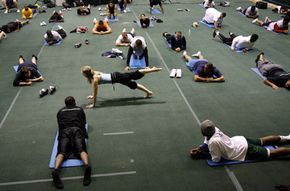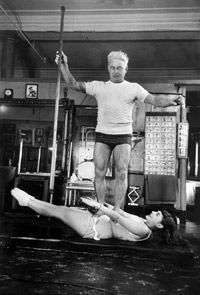Health and exercise fads constantly fall in and out of favor. The latest patented fitness system is frequently left to gather dust in the corner as a new machine or routine replaces it. However, some exercise methods withstand the test of time and gain loyal adherents. Pilates, a fitness system developed in the 1920s by Joseph Pilates, has been gaining ground since the 1980s. But what is Pilates and why is it so effective?
Pilates is a system of exercises that engage the body and mind through a series of controlled movements. These controlled movements incorporate the idea of dynamic tension, or self-resistance. Dynamic tension describes the act of exercising muscle against muscle -- a mode of exercise promoted by the fitness guru Charles Atlas, a contemporary of Joseph Pilates. Pilates employs dynamic tension and allows movements to flow together simultaneously.
Advertisement
Joseph Pilates wanted to increase adherent's flexibility and strength but also realized that a healthy mind and body are interrelated and dependent. Today, the physical trainer's methods have supplanted traditional weight-lifting exercise as an effective way to tone muscle and build strength.
In this article, we'll learn about Joseph Pilates, the Pilates method and how it became a mainstream and popular exercise system.
Advertisement


